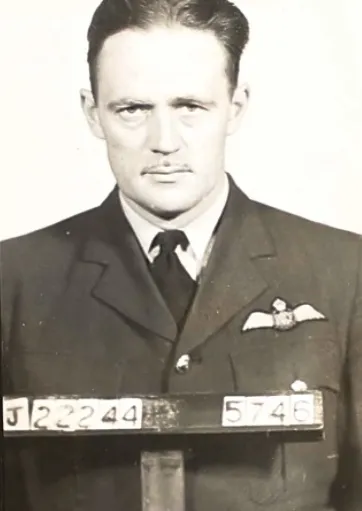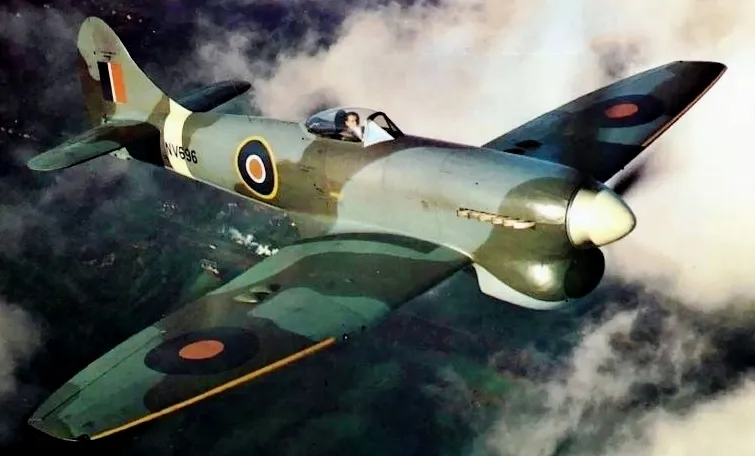Smith, Ivan Winston (Flight Lieutenant)
Killed in Flying Accident 1945-April-09


Birth Date: 1913
Born:
Parents: Son of John Alfred and Anna Lea Smith; husband of Catherine Ferguson Smith, of Canmore, Alberta.
Spouse: Husband of Catherine Ferguson Smith, of Canmore, Alberta.
Home: Canmore, Alberta
Enlistment:
Enlistment Date: unkown date
Service
RCAF
Unit
56 OTU- Operational Training Unit
Base
Rank
Flight Lieutenant
Position
Pilot
Service Numbers
J/22244
Prev: R/130349
Home
Tempest serial: EJ845

Hawker Tempest Mk. V, RAF (Serial No. NV596)
The Hawker Tempest was a British fighter aircraft primarily used by the Royal Air Force (RAF) in the Second World War. The Tempest, originally known as the Typhoon II, was an improved derivative of the Hawker Typhoon, intended to address the Typhoon's unexpected deterioration in performance at high altitude by replacing its wing with a thinner laminar flow design. Since it had diverged considerably from the Typhoon, it was renamed Tempest. The Tempest emerged as one of the most powerful fighters of World War II and was the fastest single-engine propeller-driven aircraft of the war at low altitude.
Upon entering service in 1944, the Tempest was used as a low-level interceptor, particularly against the V-1 flying bomb threat, and as a ground attack platform, in which it supported major events such as Operation Market Garden. Later, it successfully targeted the rail infrastructure in Germany and Luftwaffe aircraft on the ground, as well as countering such attacks by German fighters. The Tempest was effective in the low-level interception role, including against newly developed jet-propelled aircraft such as the Messerschmitt Me 262.
The further-developed Tempest II did not enter service until after the end of hostilities. It had several improvements, including being tropicalised for combat against Japan in South-East Asia as part of the Commonwealth Tiger Force.
The Tempest was a single engine fighter aircraft that excelled at low-level flight. In service, its primary role soon developed into performing "armed reconnaissance" operations, often deep behind enemy lines. The Tempest was particularly well suited to the role because of its high speed at low to medium altitudes, its long range when equipped with two 45-gallon drop tanks, the good firepower of the four 20mm cannon and the good pilot visibility. The three-piece windscreen and side windows of the Tempest had directly benefited from examination of captured Focke-Wulf Fw 190s, improvements included the careful design and positioning of the frame structure, blind spots being reduced to an absolute minimum. It had a bullet-resistant centre panel made up of two layers, the outer 1.5 in (38Â mm) thick and the inner 0.25 in (6.5Â mm). Wikipedia